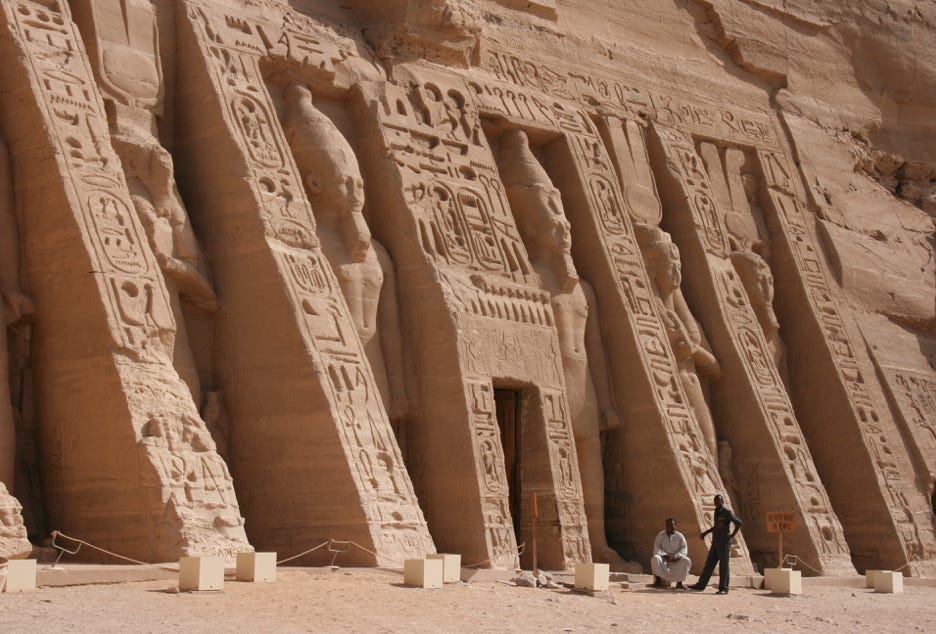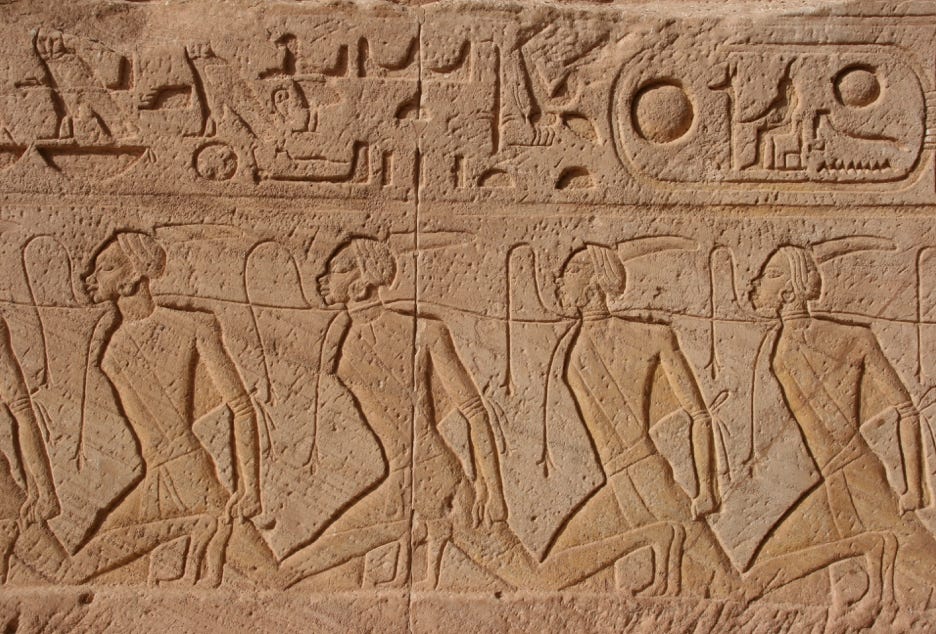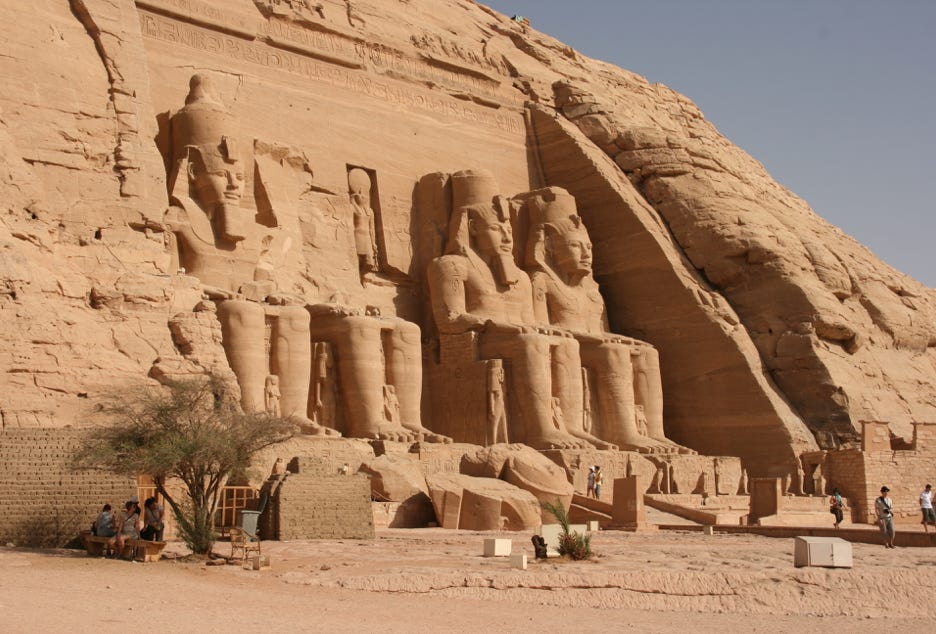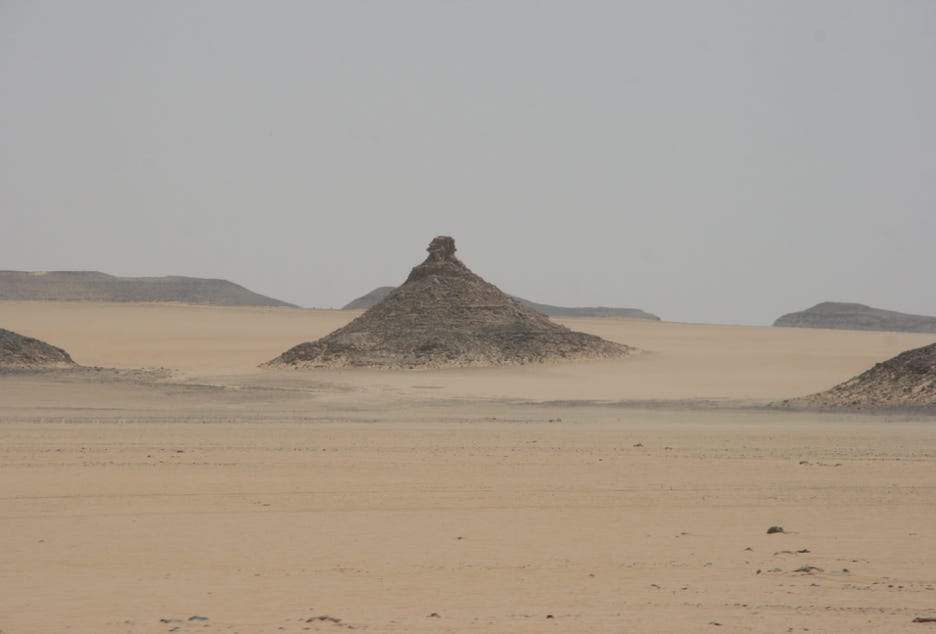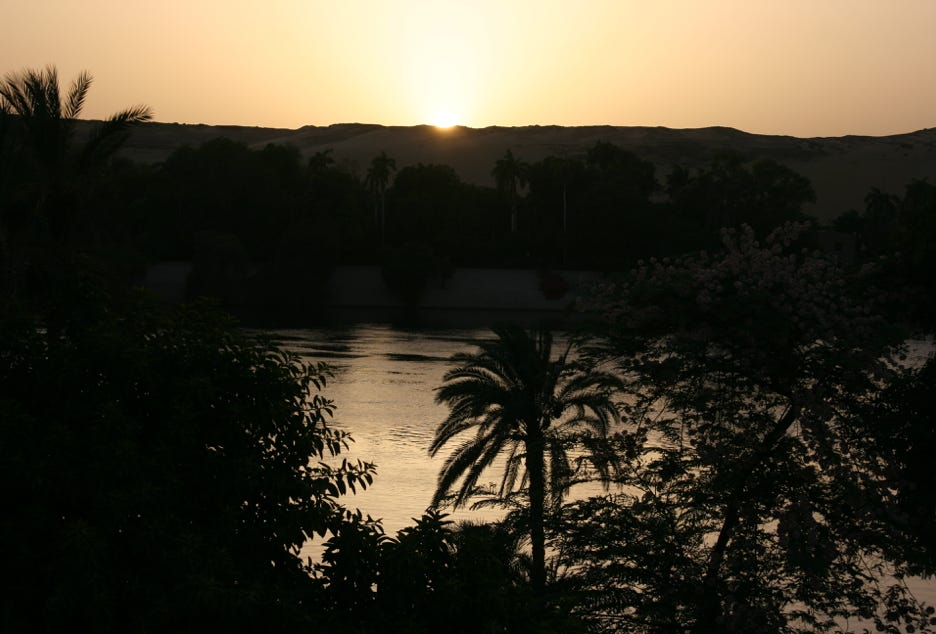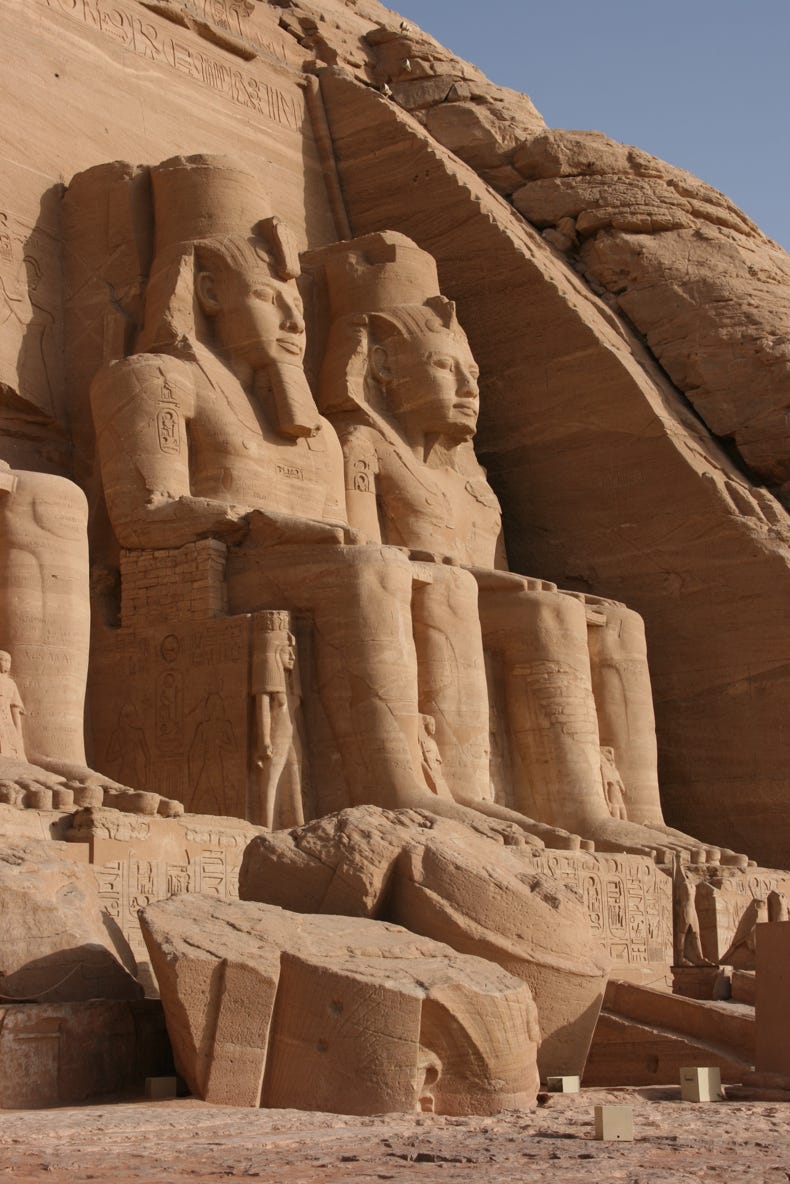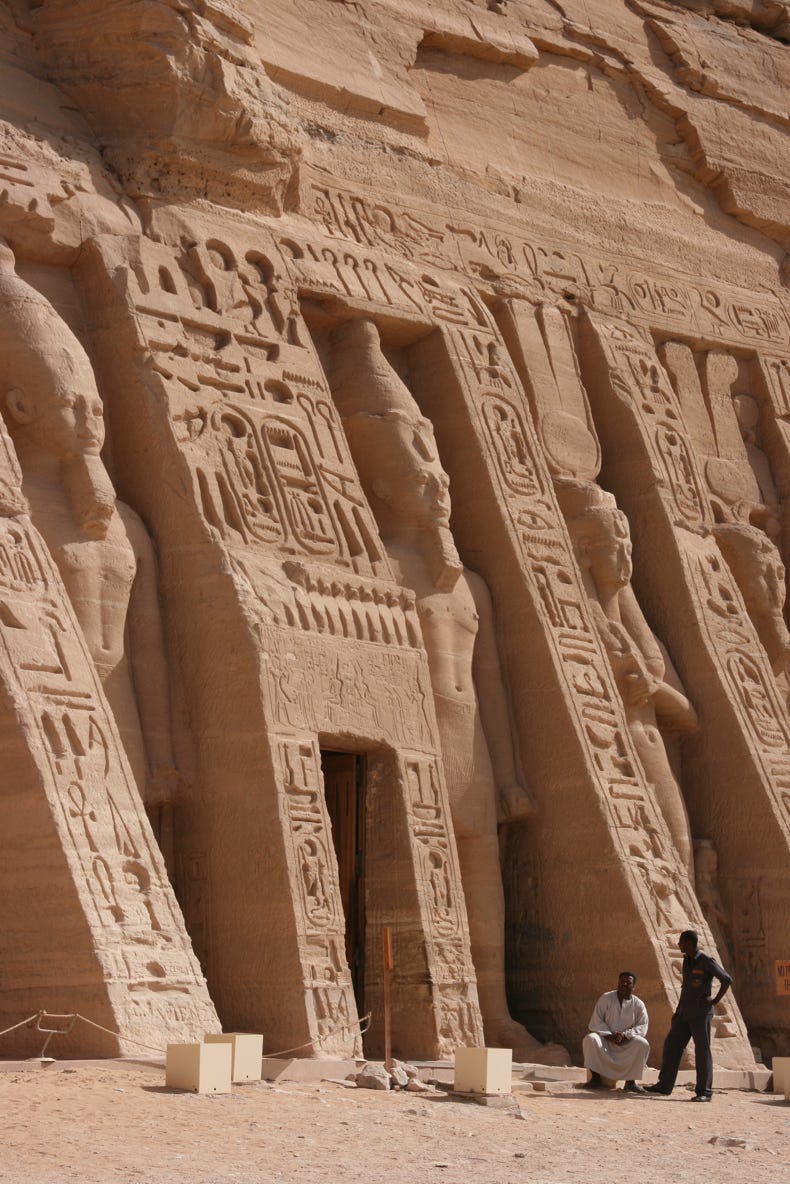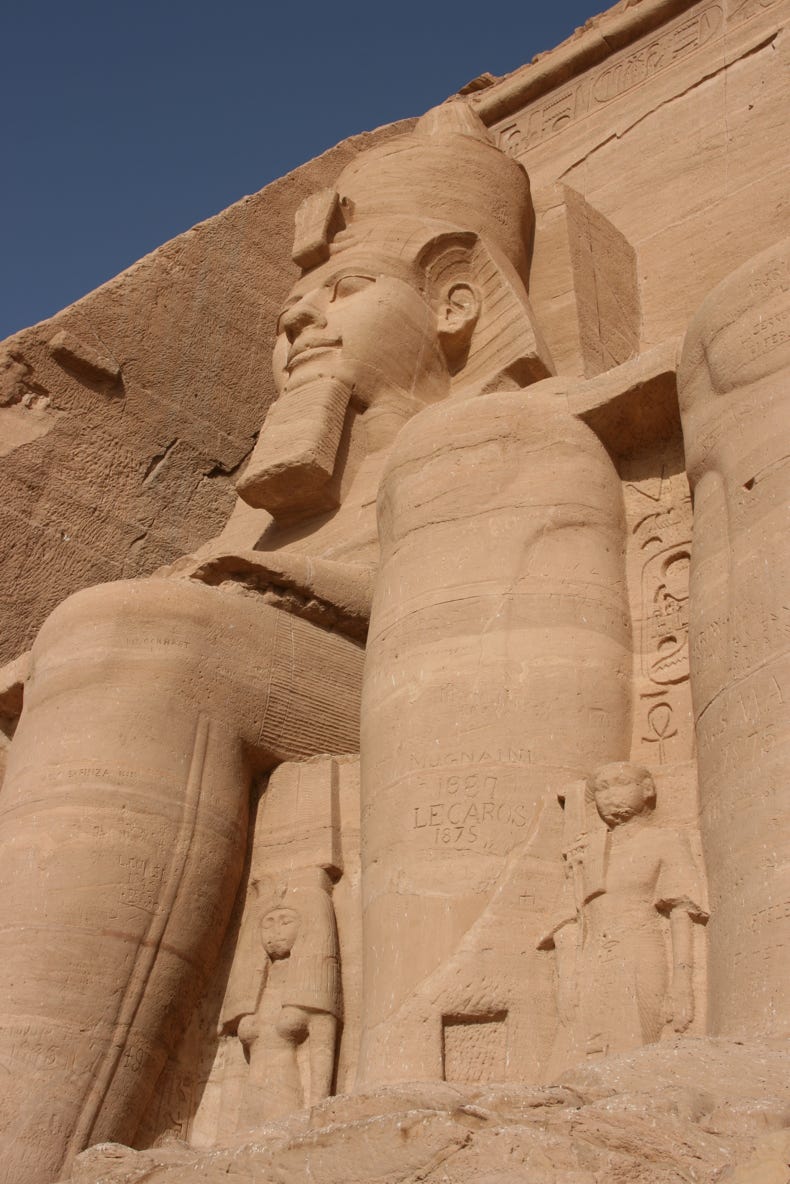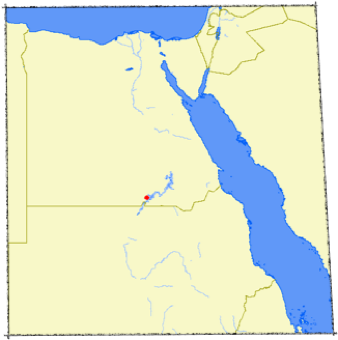
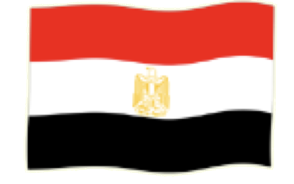

Some things in Egypt can be punctual. Right on schedule, my wake up call came through at 3 am this morning. That gave me 30 minutes to shower, dress and get to the ferry wharf to catch the 3:30 am ferry across the river into town. A vehicle was already waiting for me to drive to Abu Simbel, about 280 kilometres south of Aswan, almost at the border with Sudan.
For security reasons, foreigners are only permitted to drive to Abu Simbel as part of a convoy of vehicles. At the front of the convoy there are several large buses, followed by smaller vehicles in the middle and some more large buses at the rear. Soldiers with automatic machine guns ride in the front and the rear buses. Although there have been no fundamentalist attacks on tourists in this southern part of Egypt (unlike near Cairo and Luxor a few years ago), the risk is there, hence the security.
There are two convoys each day, one departing at 4 am and a second at 11 am. Despite the early start, my preference was for the early convoy to minimise the time spent outside in the heat of the day. After a long wait, during which more and more vehicles kept arriving to join the group, the convoy finally departed at 4:30 am. This was more typical of the Egyptian model of punctuality that I have come to expect.
Under the rules of the convoy, no vehicle may stop, and no vehicle may accelerate in front the front bus or fall behind the last vehicle in the convoy. However, that did not stop the testosterone-charged drivers competing with each other in daredevil fashion to overtake other vehicles and weave between buses in risky, high- speed manoeuvres designed to move up a place or two in the procession. On the positive side, seat belts were worn (unusual for Egypt), but only for periods of 30 seconds each when passing through the nine police check- points on the journey. Once the check-point had been passed, off came the belts immediately.
The drive to Abu Simbel took three hours each way, and I had two and a half hours there before the return convoy departed at 10 am. The attraction that enticed me to wake up at 3 am was two spectacular temples that had been carved into the rocks of the mountainside. The smaller of the two temples was the Temple of Hathor, fronted by six 10 metre high standing statues, four representing the pharaoh Ramses II, and the other two his queen, Nefertari.
The larger temple was the Great Temple of Abu Simbel, also carved into the mountainside, and fronted by four 20 metre high sitting statues of Ramses II at various stages of his life, surrounded by smaller statues of his mother, some of his favourite wives and a few of his 110 children.
What made the temple especially remarkable for me was that when the High Aswan Dam was being planned in the 1960s, it was realised that these temples would be flooded. At a cost of about US$57 million (funded by UNESCO), the temples were cut out of the mountainside and re-built immediately above their original locations inside two new artificial hills formed from concrete domes and overlain with rock. The work was astonishing because, in the case of the Great Temple, the interior rooms extended a long way into mountain, through a series of three chambers with smaller side rooms, all elaborately decorated with frescoes and large statues. Everything has been faithfully reconstructed, and the effect is stunning.
Photography was not permitted inside the temples for fear it might damage a thriving postcard industry, but as an aside, I couldn’t help thinking that the huge interior statues of Ramses II looked remarkably like Michael Jackson after his cosmetic surgery.
By 10 am the heat was building up once again and I was delighted to rejoin the convoy back to Aswan. The desert looked much more picturesque through the windows of an air conditioned vehicle!
I was back in Aswan at a little before 1:30 pm. Given my early start to the day, I decided to spend the afternoon catching up on e-mails, taking a long work-related phone call, and doing some work to prepare for my lecture to the Geographical Society in late July.

